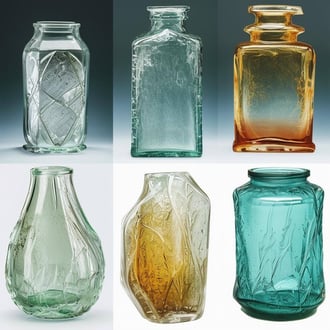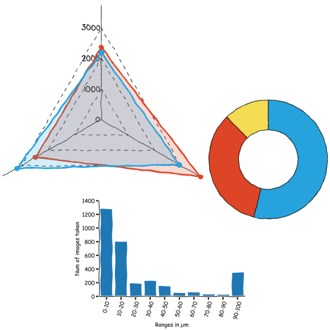Discover the capabilities of WaveMode AFM in characterizing bottlebrush polymers with unprecedented detail and speed, ...

The ultimate tool for nanoscale research from biological molecules to advanced new materials.
The versatile mid-range research AFM that grows with your demands in modes and accessories.
A compact affordable research AFM that is astoundingly easy to use, with more than 30 modes and options.
Fastest reliable sub-Angstrom surface roughness metrology.
Bringing the power of DriveAFM to a wafer metrology system purpose-built for the requirements of the semiconductor industry.
Measure roughness and other material properties of heavy and large samples up to 300 mm and 45 kg.
For unique requirements, we will design a bespoke AFM solution, leveraging our decades of engineering expertise.
Slide an AFM onto your upright optical microscope turret for a leap in resolution.
One of the smallest ever AFMs, created for integration into custom stages or existing setups.
A flexibly mountable research-grade scan head for integration into custom stages or existing set ups.
What is atomic force microscopy (AFM)? How does AFM work? What AFM modes do I really need? How do I get started with AFM?
Learn how AFM works with cantilever/tip assembly interacting with the sample. Explore CleanDrive technology, calibration methods, and feedback principles for precise nanoscale imaging.
An overview of common AFM modes. To learn about each mode in more detail and see application, view the full article.
We regularly publish detailed reviews providing practical guidance and theoretical background on various AFM applications.
Read detailed technical descriptions about selected AFM techniques and learn how to perform specific measurements on Nanosurf instruments.
A library of links to research papers in which Nanosurf instruments were used.
Learn AFM from our library of recorded webinars, covering different measurement techniques, modes, and areas of application.
Short video clips explaining how to perform different operations on Nanosurf instruments.
Watch a product demonstration to learn about the capabilities of our AFMs.
Short videos of our AFMs.
Browse news articles, press releases and a variety of other articles all around Nanosurf
Browse Héctor Corte-Léon's weekly experiments, for inspiration, entertainment, and to discover everyday applications of AFM.
Héctor here, your AFM expert at Nanosurf calling out for people to share their Friday afternoon experiments. Today I do some photonics with the help of a bug.
Beetles are amazing. (Full stop).
First of all, do you know that some beetles use the stars for navigation? Not joking, there is serious research about it (Dung Beetles Use the Milky Way for Orientation).
But that is not all about beetles and light - did you ever wonder where the metallic-rainbow colors on their surface come from?
According to the literature, the main optical properties of the cuticle (the hard exoskeleton), are due to chitin fibers ordered in layers where the fibers in each layer are aligned in a slightly different direction creating a short of photonic crystal.
For us, it will be hard to see the buried chitin layers, but can we see something interesting at the surface level?
1 Topography images of epicuticle surface. Using Static force mode and ContAL-G probes from Budget Sensors.
We can see periodic cracks in the surface. Period (see last figure) is about 10 μm, and step height varies between 32 and 60 nm (likely to be 30 nm and sometimes two steps merge together). This value is similar to the 27.7 nm reported as chitin layers' thickness (by Hans Arwin et al. "Cuticle structure of the scarab beetle Cetonia aurata analyzed by regression analysis of Mueller-matrix ellipsometric data," Opt. Express 21, 22645-22656 (2013)), hence it is likely that the blazed grating structure on the surface forms from the chitin layers not being parallel to the surface. Cool, we already learned something.
What else can we see?
Well, the cement channels coming from the dermal glands are kind of fairly easy to see, what about the wax channels?
It turns out we can see them also, but the probes we were using before where too soft and the adhesion in the surface was making it difficult to see fine details (the wax+cement mix is sticky), so we had to change to stiffer probes and dynamic mode to see the channels with better detail. Better than that, we can measure the channel aperture width, which I haven't seen reported before (please share a publication if you find it). It is about 70 nm in diameter.
Coming back to the periodic cracks in the surface... as it turns out, they can be considered as a blazed grating structure. Blazed gratings are very cool gratings due to their directionality, causing light scattering to vary based on wavelength. By measuring certain parameters, we can identify the magic angle and magic wavelength, where light coming at that angle achieves perfect reflection (check the Wikipedia link for the formula). These wavelengths are 307 nm, 153 nm, 76 nm .... But only 307 nm matters, because while in the UV range, it is still emitted by the sun and thus the only likely to appear in the beetle's day to day life. Could this function as a type of navigation mechanism? Perhaps these gratings are used to sense the sun's direction through absorption or reflection changes relative to their orientation. I'll leave this intriguing possibility for speculation or the potential discovery of a relevant reference.
Some researchers suggest that the main objective of the gratings is to reduce friction when the beetle is moving between fibrous objects.
Since the rose chafer beetle is poisonous and feeds on plants, could this also be a warning mechanism for other insects? Bees are able to see up to 300 nm wavelength, so maybe these beetles shine in the bee's eyes and they can avoid them.
The interesting part is that there is a grating, and is bound to affect the light, and the magnitude of its effect in relation to the photonic crystal underneath... is something to be studied elsewhere.
Hope you liked it!
By the way, if you made it this far, here are some discarded images.
Stay in touch, and if you have more info about these beetles, please share.

28.10.2025
Discover the capabilities of WaveMode AFM in characterizing bottlebrush polymers with unprecedented detail and speed, ...

27.10.2025
Read this blog and discover advanced alloy engineering and cutting-edge AFM techniques for high-resolution, ...

14.10.2025
Discover how WaveMode technology resolves the tobacco mosaic virus structure under physiological conditions with ...

08.12.2024
Learn how to make a Python code to interface your AFM with a gamepad.

01.10.2024
FridayAFM: learn how the extreme sensitivity of AFM can reveal the glass ageing process.

11.07.2024
FridayAFM: learn how to perform datamining on large sets of AFM data.
Interested in learning more? If you have any questions, please reach out to us, and speak to an AFM expert.
